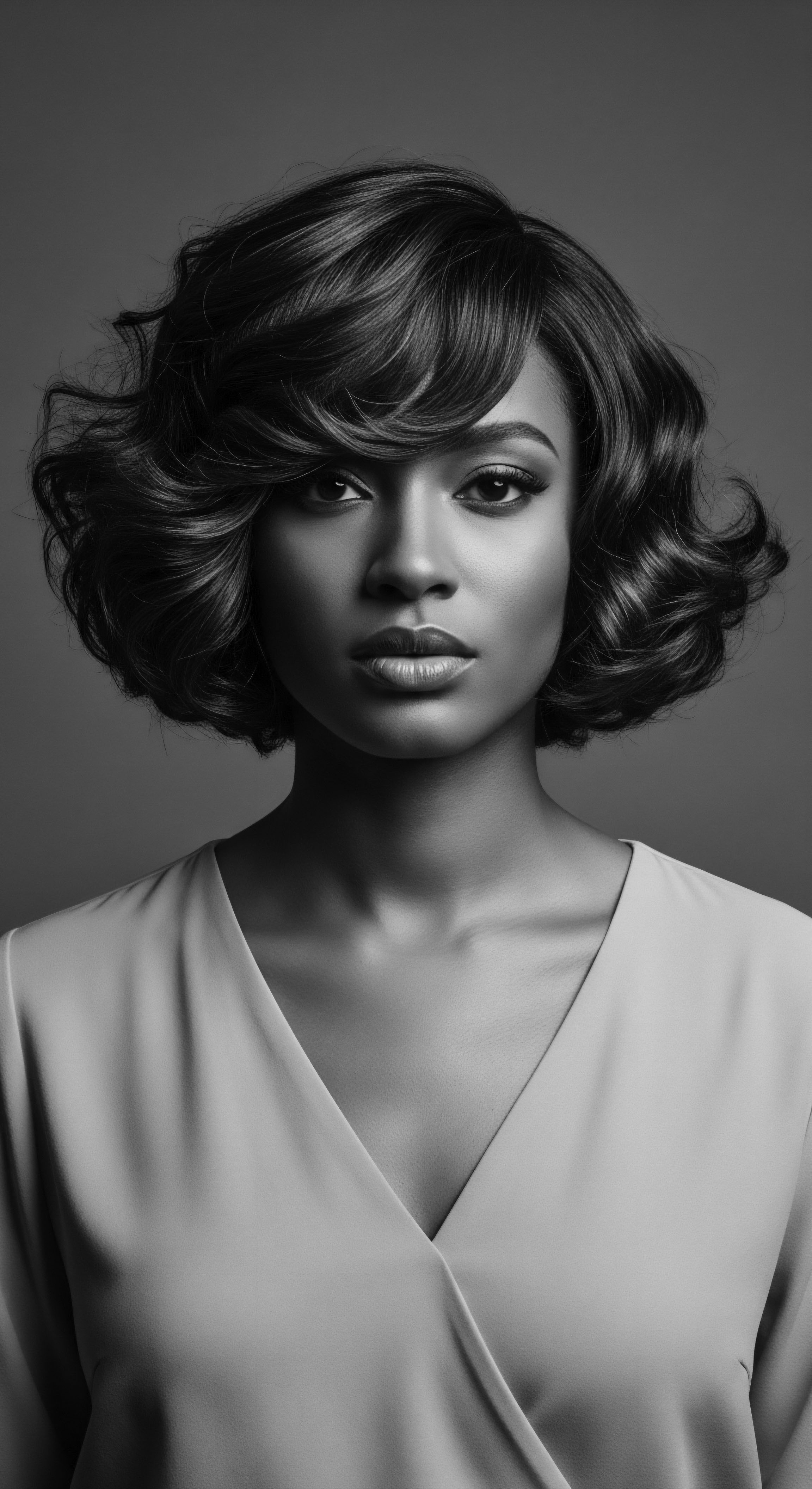
Roots
Consider a single strand, a helix spiraling into existence. Within its delicate yet powerful structure lies a story far grander than mere aesthetics. It whispers of sun-drenched savannas, of ancient journeys under skies ablaze, of communities who read status and wisdom in every twist and turn.
Our journey into textured hair biology is a passage through time, a meditation on how human biology reflects the profound wisdom of adaptation and the deep heritage of ancestral environments. Textured hair is not simply a biological marvel; it is a living archive, a continuous narrative stretching from the dawn of humanity to our present day, carrying the echoes of our beginnings.

Ancestral Designs
The unique architecture of textured hair, particularly its characteristic coils and tight curls, is a testament to the remarkable ingenuity of human adaptation. Hair follicles that produce highly curled strands are typically elliptical or flat in cross-section, causing the hair shaft to grow with a natural bend. This contrasts with straight hair, which emerges from more symmetrical, round follicles.
The very angle at which the follicle sits within the scalp also plays a role, with more angled follicles contributing to tighter spirals. This biological blueprint, deeply ingrained in our genetic code, speaks volumes about the environments where humanity first took root.
Scholarly work suggests that the tightly coiled nature of textured hair served a critical thermoregulatory function for early humans in equatorial Africa. As humans transitioned to bipedalism, their upright posture exposed the scalp directly to the intense solar radiation of the African sun. A study by Lasisi et al. (2023) in the Proceedings of the National Academy of Sciences utilized thermal manikins and human hair wigs to investigate this phenomenon.
The findings indicate that tightly curled hair provides superior protection from the sun’s radiative heat while minimizing the need for sweat to cool the scalp. This protective canopy created by the dense, coiling strands acts as an insulator, reducing heat gain and helping to maintain a stable brain temperature. Melanin, too, plays a part, absorbing and scattering ultraviolet radiation across the hair structure, providing an additional layer of defense.
Textured hair is a biological masterpiece, sculpted by the adaptive needs of early humans in sun-drenched ancestral lands.
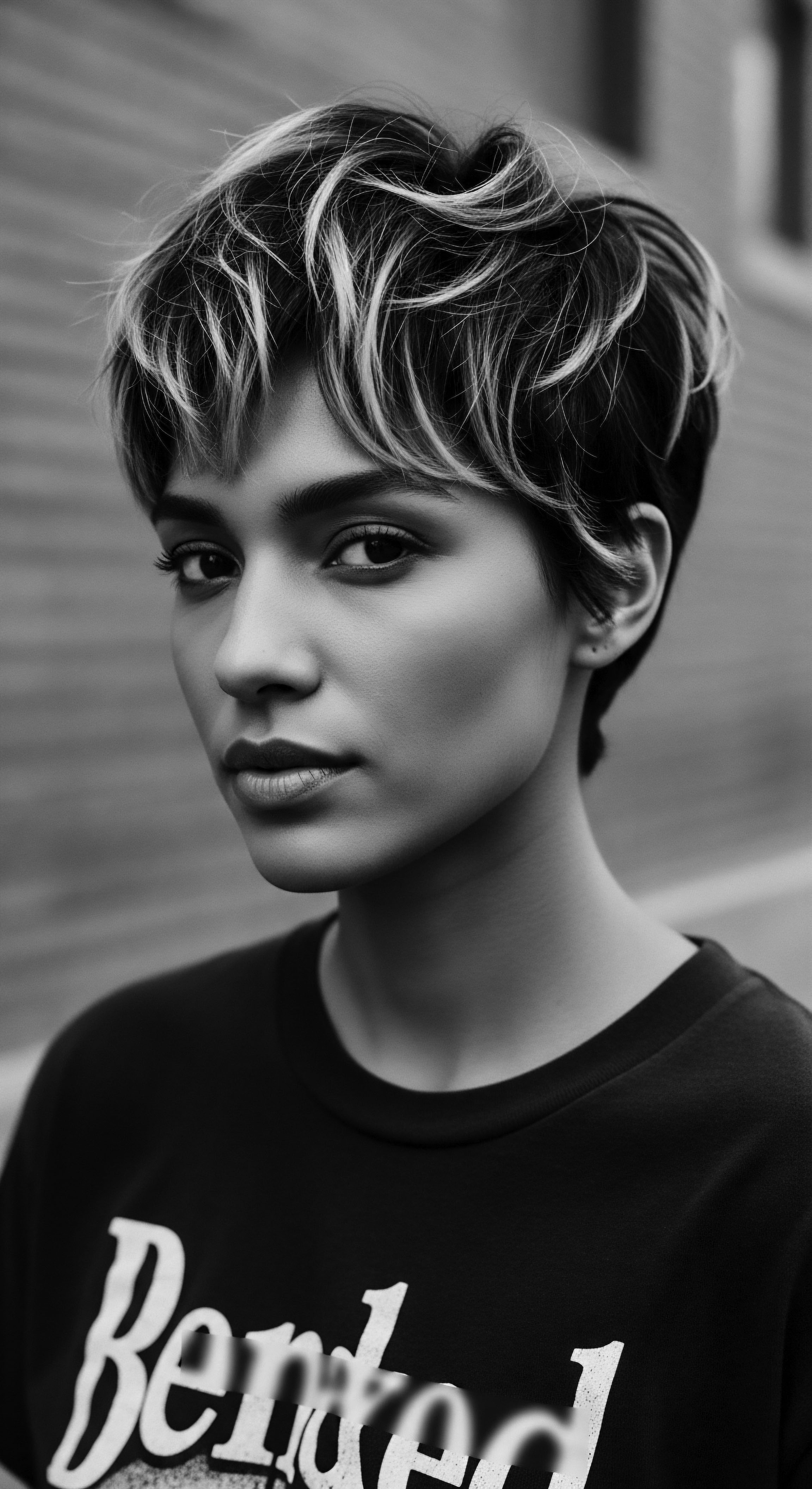
Understanding Hair Structure
The microscopic composition of textured hair reveals further adaptive features. The cuticle, the outermost layer of the hair shaft, is often more open or raised in highly coiled hair, a characteristic that while sometimes leading to increased moisture loss, also allows for greater surface area interaction, perhaps for evaporative cooling in humid environments, or to trap air for insulation in others. The internal structure, rich in keratin proteins, forms a complex network of disulfide bonds. These bonds contribute to the hair’s elasticity and strength, allowing it to withstand repeated manipulation and environmental stressors inherent in a life without modern amenities.
The hair’s natural springiness and volume also served a practical purpose. Thick, dense hair provided a physical barrier, potentially shielding the scalp from physical abrasions or insects in harsh environments.
It bears consideration that hair classification systems, while useful in contemporary contexts, often fall short of capturing the true breadth of textured hair’s heritage. Modern classifications, such as those categorizing hair from Type 1 (straight) to Type 4 (coily), largely stem from post-colonial frameworks, sometimes unintentionally reinforcing Eurocentric beauty ideals.
Our ancestral communities, however, possessed their own frameworks for understanding hair, often deeply tied to social structures, age, and spiritual beliefs, rather than solely curl patterns. These systems were expressions of identity and community, not rigid scientific charts.
- Folk Taxonomy ❉ Traditional societies often described hair by its appearance, behavior, and the practices it facilitated, rather than a numerical curl type.
- Cultural Meanings ❉ Hair was frequently described through its connection to family lineage, marital status, or the wearer’s spiritual standing.
- Adaptive Descriptions ❉ Terms might relate to how well hair held certain styles, or how it behaved in different climates or activities.
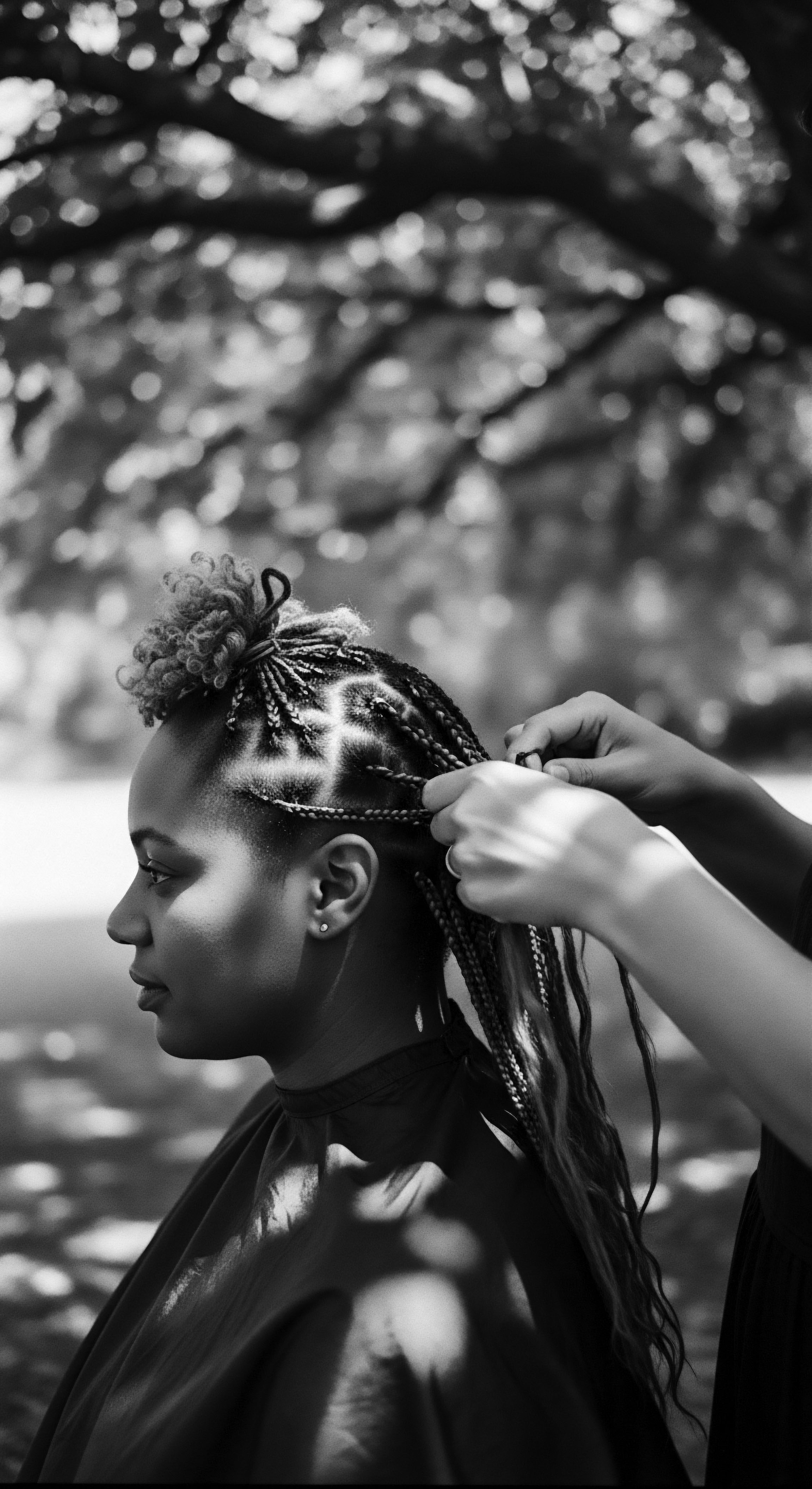
Growth Cycles and Elemental Influences
The hair growth cycle, comprising anagen (growth), catagen (transition), and telogen (rest), is a universal human biological process. Yet, its nuances, particularly in textured hair, can offer insights into ancestral living. While direct evidence of historical growth rates based on texture is scarce, we know that overall hair health and growth were, and remain, intricately linked to nutritional intake and environmental conditions.
Ancestral diets, rich in whole foods, lean proteins, and specific micronutrients, naturally supported robust hair growth. A study on the Paleo diet, for example, highlights how a diet similar to that of hunter-gatherer ancestors, abundant in wild game, fish, plants, nuts, and seeds, provides essential nutrients such as B vitamins, iron, and zinc, all critical for hair follicle function and growth.
Conversely, periods of scarcity or nutrient deficiency would have visibly impacted hair, making it a natural indicator of an individual’s wellbeing within the community. Hair was a visible marker of life’s journey, reflecting health, age, and communal standing. The resilience of textured hair, despite environmental challenges and nutritional variations, speaks to its intrinsic strength, a strength passed down through generations.

Ritual
Moving from the inherent biology of textured hair, we now immerse ourselves in the rituals, the tender threads of practice that have shaped its heritage through millennia. Hair, for countless ancestral communities, was never simply a biological outgrowth. It was a language, a canvas, a sacred conduit for connection to lineage and spirit.
The daily and ceremonial tending of hair became a profound cultural act, weaving together the functional needs of protection with the deepest expressions of identity. These practices, honed over generations, bear witness to an enduring wisdom that understood the hair’s living nature and its capacity to tell a story.

Protective Styling Ancestry
The rich heritage of protective styling stands as a powerful example of how ancestral ingenuity responded to both the biological needs of textured hair and the environmental realities of life. Styles such as braids, twists, and cornrows, which trace their origins back thousands of years in African cultures, served a dual purpose. They safeguarded the hair from environmental damage—sun, dust, and physical abrasion—and at the same time, they were intricate symbols of identity, status, age, and even spiritual beliefs. Archaeological evidence from ancient Egypt, the Kingdom of Kush, and various West African cultures reveals that African hairstyles were expressions of power, spirituality, and social cohesion.
The practice of braiding, for instance, was documented as far back as 3500 BC, particularly in the Horn and West coasts of Africa. These styles were not merely aesthetic choices; they were communal activities, fostering social bonds as women gathered for hours, sometimes days, to create these elaborate works. The practical biological benefit of these styles is undeniable ❉ by consolidating strands, protective styles minimize manipulation, reduce tangling, and thereby help to retain length and prevent breakage. This wisdom, born from observation and sustained through communal practice, protected hair over lifetimes, allowing it to flourish despite the demands of ancestral living.
Ancestral styling rituals are living testimonies to humanity’s ingenuity in honoring textured hair.
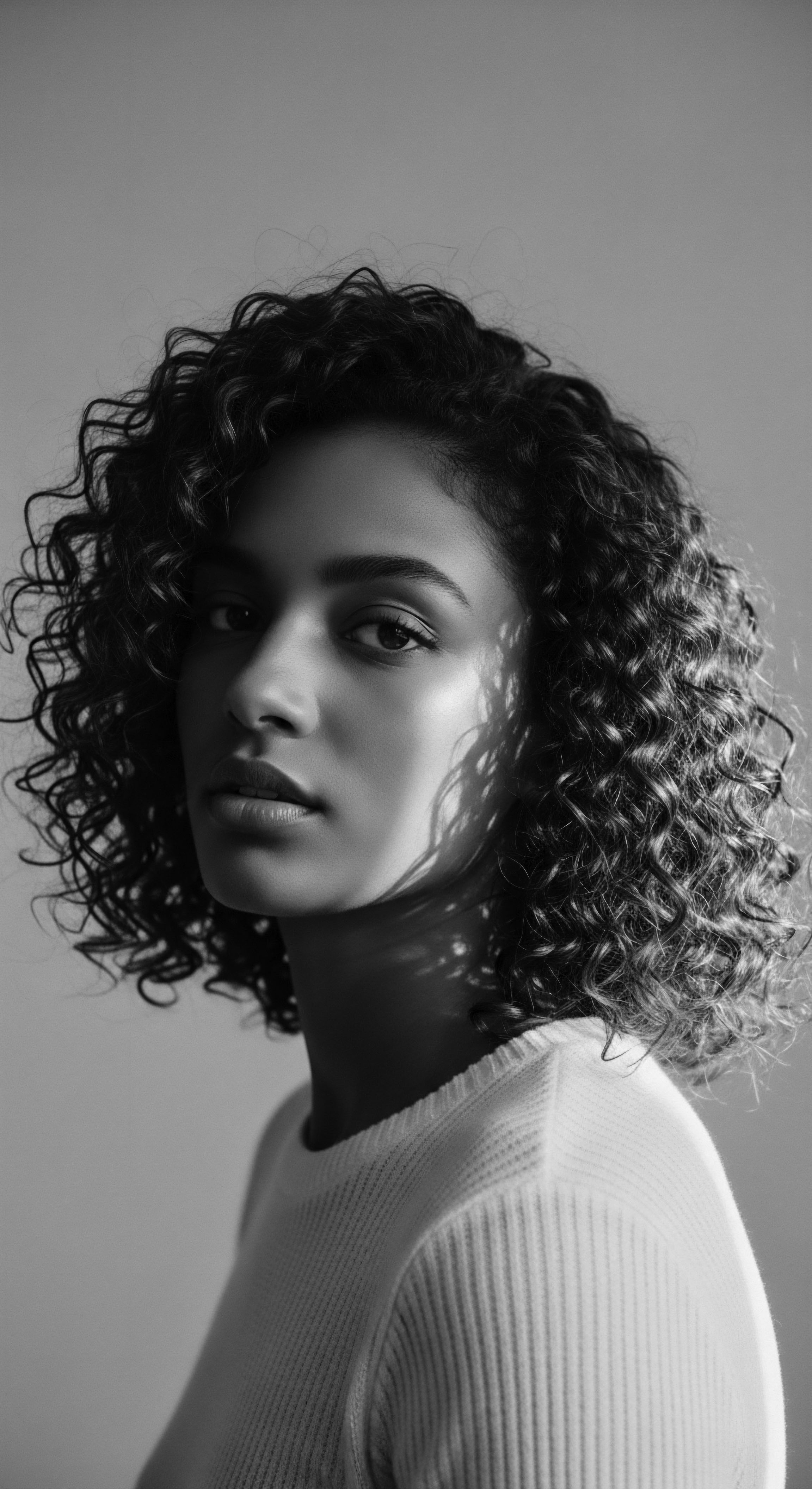
Traditional Definition Practices
Beyond protective measures, ancestral communities devised ingenious methods to celebrate and define the natural contours of textured hair. Consider the use of African Threading, known as “Irun Kiko” among the Yoruba people of Nigeria. This ancient technique, documented as early as the 15th century, involves using flexible wool, cotton, or rubber threads to section and wrap hair, creating elongated, defined coils or waves without heat. This method protects the hair while also serving as a heatless way to stretch and style, reflecting an understanding of moisture retention and minimal manipulation long before modern science articulated these principles.
The communal aspect of hair care also extends to styling. In many African societies, hair grooming was a social event, a time for women to gather, share stories, and build community, reinforcing the bonds that held their societies together. The knowledge of these practices was passed directly from elder to younger, often through observation and participation, creating a continuous chain of heritage. This intimate transfer of knowledge underscores the idea that hair care was not a solitary task but a communal art, deeply embedded in the social fabric.
The significance of these shared rituals becomes particularly clear when considering the traumatic interruption of the Transatlantic Slave Trade. Enslaved Africans, forcibly stripped of their cultural practices, clung to hair traditions as a means of survival and resistance. Braids were used to conceal seeds for survival or even to map escape routes from plantations (BLAM UK CIC, 2022).
This covert preservation of styling knowledge during unimaginable adversity stands as a powerful example of hair serving as a silent, yet potent, assertion of identity in the face of forced assimilation. This profound historical example shows how the biological ability of textured hair to be manipulated into complex, stable structures allowed it to become a vessel for hope, communication, and enduring heritage in times of extreme oppression.

The Tools of Heritage
The instruments used for hair care in ancestral environments were often born from necessity and a deep understanding of natural materials. From meticulously carved wooden combs that gently detangled coiled strands to plant fibers used for braiding and extensions, these tools were designed in harmony with the hair’s unique biology.
| Tool Category Detangling Instrument |
| Ancestral Example (Heritage Use) Hand-carved wooden combs used for their smooth, wide teeth to gently separate coils and preserve the cuticle. |
| Modern Parallel (Biological Link) Wide-tooth combs and flexible detangling brushes designed to minimize friction and breakage on textured hair. |
| Tool Category Styling Elongation |
| Ancestral Example (Heritage Use) African threading materials (wool, cotton) employed for heatless stretching, enhancing length retention and defining patterns. |
| Modern Parallel (Biological Link) Flexi rods and heatless curl formers, which provide curl definition and stretching without thermal stress. |
| Tool Category Protective Adornment |
| Ancestral Example (Heritage Use) Cowrie shells, beads, and natural fibers woven into braids, adding weight and securing styles while conveying social status. |
| Modern Parallel (Biological Link) Hair jewelry and decorative elements that secure styles and express personal style, also aiding in stability. |
| Tool Category These tools, old and new, underscore a continuous lineage of care, adapting techniques to the specific needs of textured hair. |
The thoughtful design of these tools speaks to an intimate familiarity with textured hair, ensuring that manipulation was done with reverence for its delicate nature, thereby reducing damage and supporting its inherent strength. The crafting of such tools was itself an expression of cultural artistry, where utility and aesthetic beauty intertwined, preserving a connection between human hands, natural resources, and the living hair.

Relay
As we navigate the continuous narrative of textured hair, we arrive at the relay, the passing of wisdom across generations, where the science of hair meets the enduring spirit of ancestral wisdom. Here, the living traditions of care and problem-solving draw directly from the biological blueprint of textured hair, always honoring its heritage. The contemporary appreciation for natural hair is not a fleeting trend; it is a profound reconnection to practices and philosophies that have sustained communities for millennia, finding resonance in modern scientific understanding.
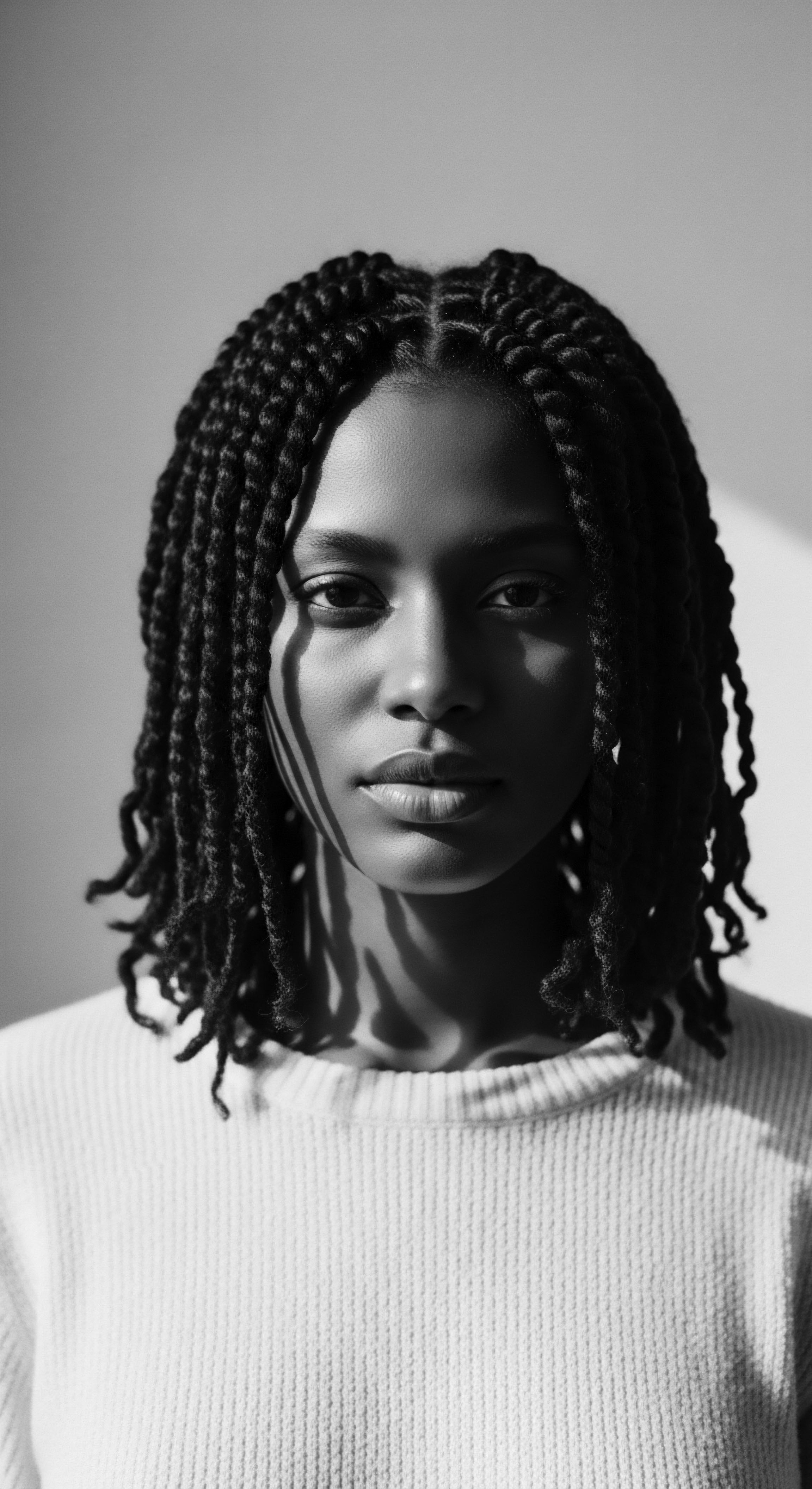
Holistic Care Philosophies
Building a personalized textured hair regimen today often finds its deepest roots in ancestral wellness philosophies. For centuries, communities understood that healthy hair was a reflection of holistic wellbeing—a harmony of body, spirit, and environment. Their care regimens were not merely superficial acts of grooming; they were integral components of a lifestyle that respected natural rhythms and utilized local resources.
This systemic approach is a hallmark of ancestral wisdom, recognizing that what nourishes the body also sustains the hair. From this perspective, scalp health, moisture balance, and the strength of the hair shaft were understood through observation and experimentation over lifetimes.
Consider the deep integration of specific ingredients, not just for their isolated properties, but for their synergistic effects within a complete wellness framework. This comprehensive view contrasts with a more compartmentalized modern approach, where one might address hair issues in isolation from overall health. Ancestral methods embraced nutrient-rich diets, stress-reducing rituals, and communal support as fundamental elements of hair vitality. This holistic thinking provides a profound framework for contemporary hair care, reminding us that true radiance stems from a wellspring of inner and outer balance.
Hair care, in its deepest sense, is an act of reciprocal connection, linking individual wellbeing to communal heritage.
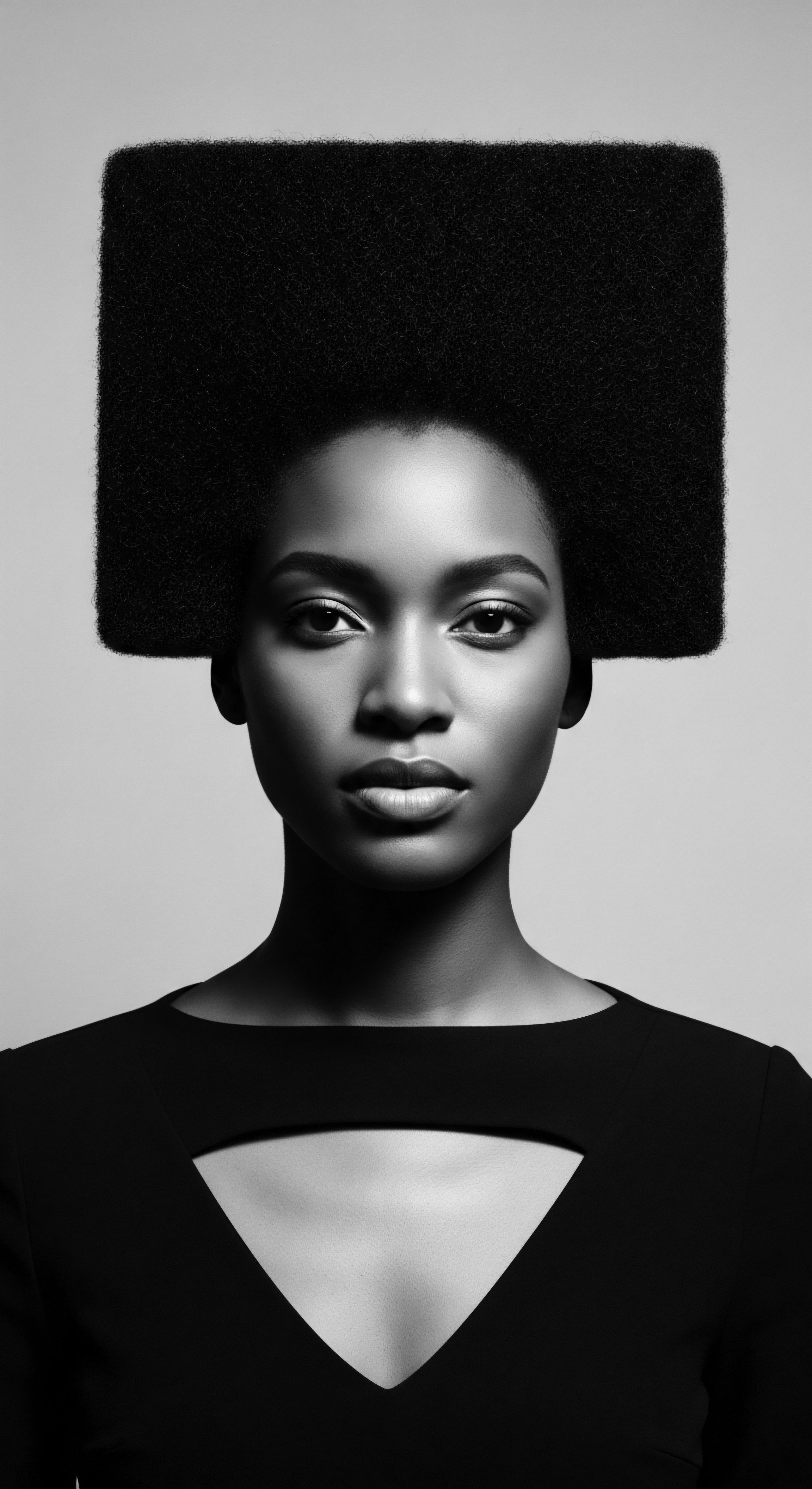
Nighttime Rituals and Protective Garments
The nighttime sanctuary, with its essential sleep protection, serves as a powerful instance of ancestral wisdom directly supporting textured hair biology. The use of head coverings like bonnets, scarves, and wraps for sleep protection is a tradition found across various African and diasporic communities, far predating modern hair science. Biologically, these coverings minimize friction between hair and absorbent surfaces like cotton pillowcases, which can strip precious moisture from already dryness-prone textured hair.
They also reduce tangling, which prevents mechanical damage and breakage. This simple, yet incredibly effective, practice speaks to generations of observational science.
Historically, head coverings carried immense cultural and spiritual significance, marking status, modesty, and spiritual devotion in many societies. As Africans were forcibly dispersed during the Transatlantic Slave Trade, these practices continued, adapting to new environments. The headwrap, for example, became a symbol of resilience and cultural continuity in the Americas, transforming from a marker of imposed subservience in some contexts into a defiant assertion of identity and heritage (Buala, 2024). This dual functionality—biological protection and cultural expression—demonstrates the deep interplay between practical care and profound heritage.

Ingredients from Ancestral Apothecaries
The ancestral world provided a rich apothecary of ingredients, each meticulously chosen for its beneficial properties for hair. These plant-based elements were the bedrock of traditional hair care, their efficacy validated through centuries of lived experience, long before scientific laboratories could analyze their molecular structures.
- Shea Butter ❉ Sourced from the African shea tree, this butter was used for centuries for its emollient properties, providing deep moisture and acting as a sealant for thirsty coils. Its rich fatty acid profile nourishes the hair shaft, improving elasticity and reducing breakage, particularly relevant for hair types prone to dryness.
- African Black Soap ❉ A traditional West African soap, often made from shea butter, coconut oil, and plantain skins. It cleanses the scalp and hair gently, traditionally used for its clarifying properties without stripping essential oils.
- Chebe Powder ❉ Originating from the Basara Arab women of Chad, this powder, made from various herbs and seeds, is traditionally mixed with oils or butters and applied to the hair to retain length by preventing breakage and locking in moisture. Its use is a direct response to the tendency of highly coiled hair to be drier and more susceptible to breakage.
- Marula Oil ❉ A traditional oil from Southern Africa, it was used for both skin and hair due to its moisturizing qualities. Its antioxidant content provides protection, aligning with modern understanding of free radical damage.
These ingredients were not simply applied; they were often part of elaborate rituals, infused with intention and communal knowledge. The deliberate gathering, preparation, and application of these natural elements speaks to a deep reverence for the earth’s bounty and its capacity to sustain and adorn.
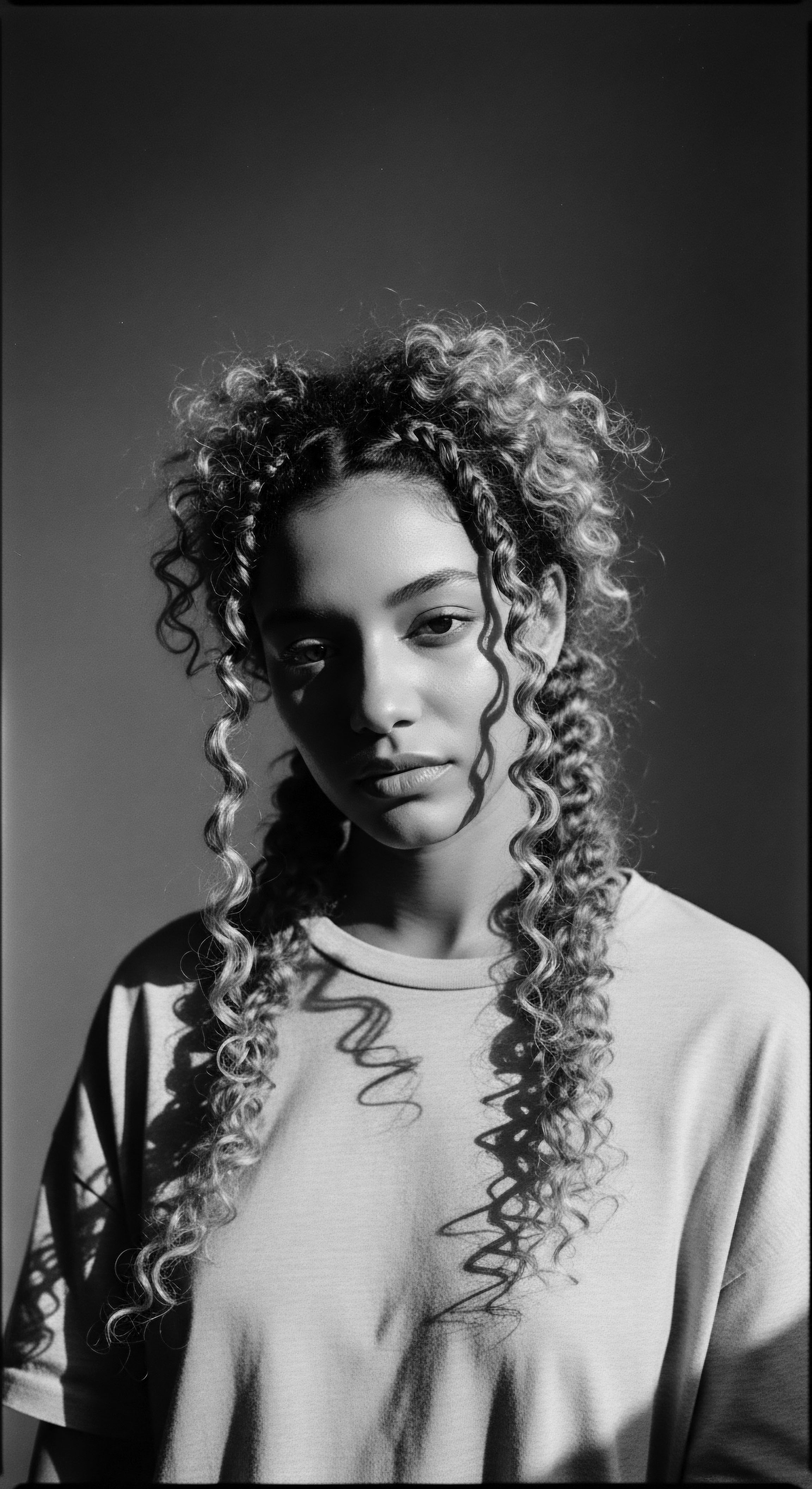
Addressing Hair Challenges through Heritage
Ancestral wisdom offers profound perspectives on addressing common hair challenges. Dryness, a prevalent concern for textured hair due to its unique cuticle structure and coil pattern, was historically mitigated through consistent oiling and butter applications. Rather than seeking quick fixes, traditional practices emphasized patience, regular maintenance, and a deep understanding of the hair’s needs over time. Breakage, too, was countered through protective styling and gentle handling, prioritizing the hair’s integrity.
How does the biological makeup of textured hair relate to its resilience through historical challenges? The inherent springiness and resilience of textured hair, coupled with its ability to retain moisture when properly cared for, allowed individuals to survive and even thrive in conditions that were far from ideal. The biological capacity for varied hair manipulation also allowed for adaptability in adverse circumstances, becoming a vessel for coded messages and cultural preservation during times of extreme oppression.
The physical attributes of textured hair provided a natural canvas for cultural expression, even when other forms of identity were suppressed. This continuity of practice, even when resources were scarce or conditions harsh, speaks volumes about the intrinsic connection between hair, wellbeing, and an enduring heritage.
The exploration of ancestral diets also offers pathways to address hair health challenges from within. Deficiencies in vital nutrients such as B vitamins, iron, and zinc can contribute to hair thinning and loss. Ancestral diets, rich in whole, unprocessed foods, naturally supplied these essential components. A shift back to nutrient-dense eating, mirroring the ancestral approach, supports hair health by providing the fundamental building blocks for strong, resilient strands.
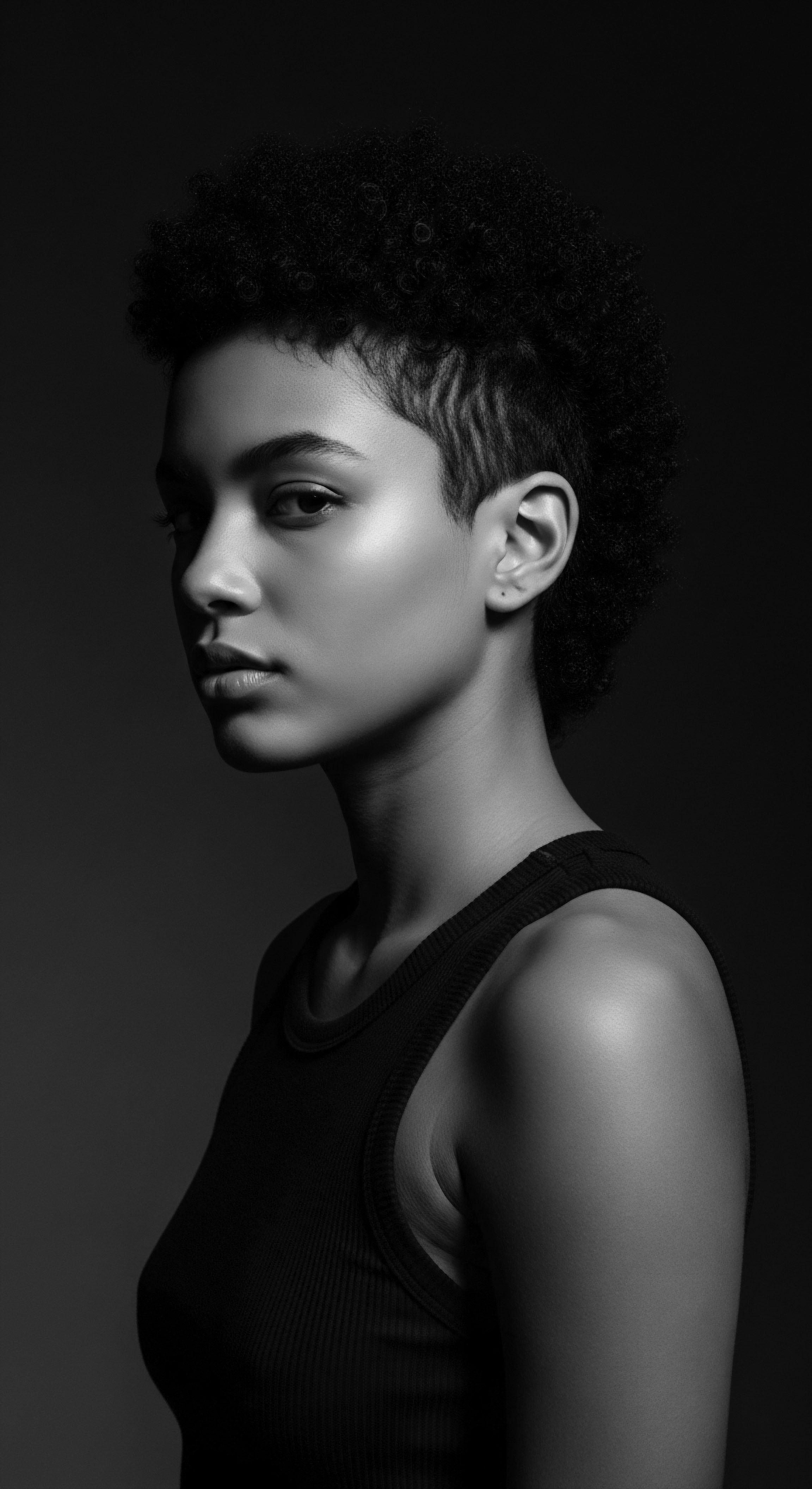
Relay
The journey through textured hair biology is a continuous relay, a vibrant passing of wisdom from ancestral past to living present. Here, the profound connection between how textured hair evolved and the environments it encountered becomes clearer, moving beyond surface understanding to a deeper appreciation of its cultural and scientific lineage. The biological characteristics of textured hair are not random; they are deeply ingrained responses to ancient ecological pressures, reflected in the enduring heritage of care practices that have transcended generations.
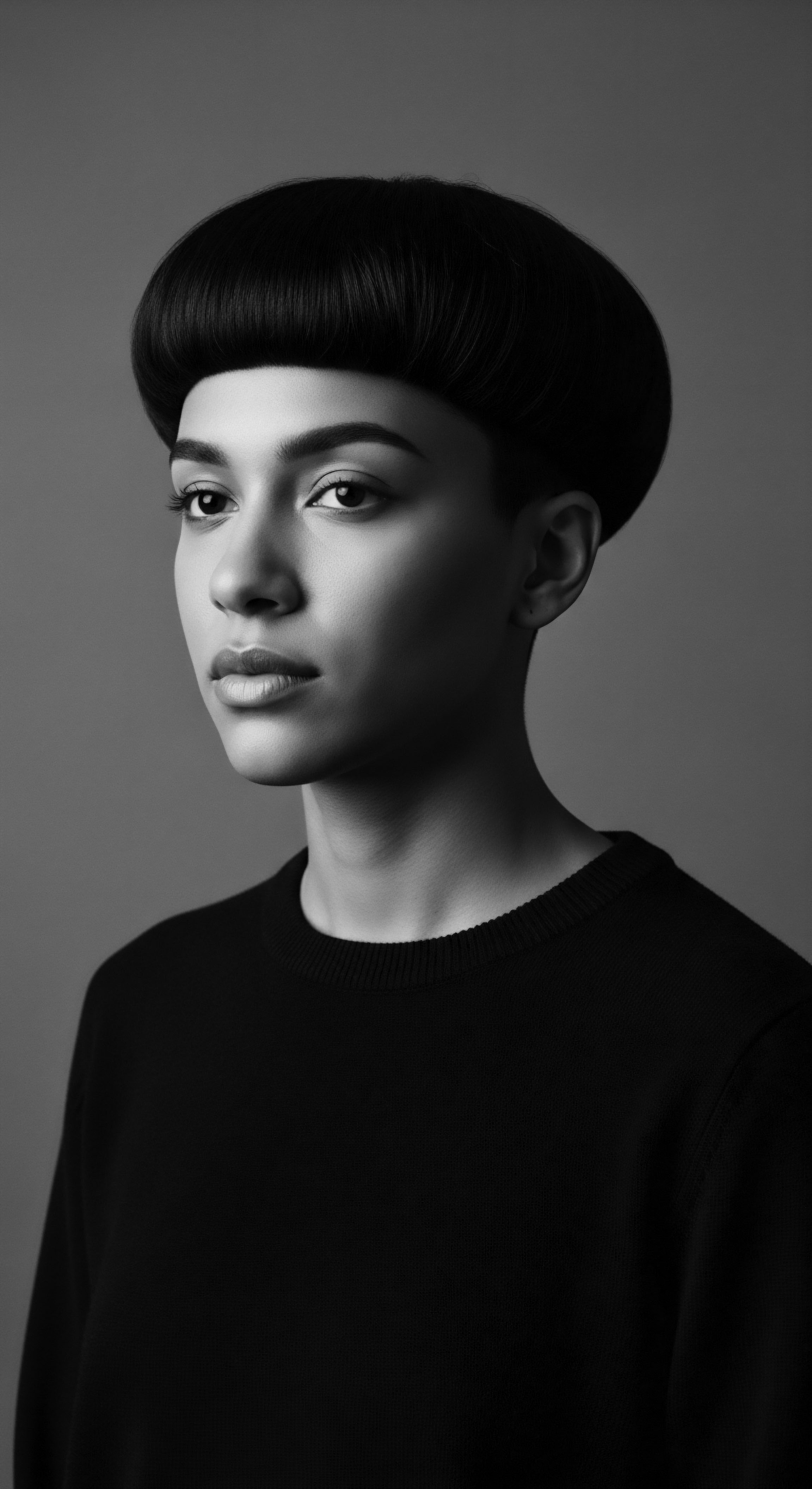
Biological Adaptation in Ancient Climates
The evolutionary trajectory of human hair texture is a compelling narrative of survival, particularly in the challenging environments of equatorial Africa. Early humans, evolving to walk upright, faced the relentless direct impact of the sun’s radiation on their exposed scalps. This intense solar exposure presented a significant thermoregulatory challenge, especially as human brains began to grow larger and more sensitive to heat. The tight coils of textured hair provided a remarkably effective solution.
A pivotal study by Lasisi et al. (2023), published in the Proceedings of the National Academy of Sciences, offers compelling scientific evidence. Their experiments using thermal manikins, models that simulate human body heat, and human-hair wigs revealed that tightly coiled hair significantly reduces the amount of solar heat absorbed by the scalp.
This mechanism operates by creating an insulating layer of air within the curls, which helps to minimize heat gain and simultaneously reduce the body’s need to sweat to cool the head. This biological design effectively served as a natural sun helmet and cooling system, allowing early hominins to maintain stable brain temperatures while conserving vital water in arid climates.
The melanin content common in textured hair also plays a direct biological role. Melanin, beyond its function in skin pigmentation, absorbs and disperses harmful ultraviolet (UV) radiation, protecting the hair shaft itself and the underlying scalp from sun damage. This combined biological architecture—follicle shape, coil pattern, and pigment density—represents a sophisticated adaptation, ensuring the survival and proliferation of populations in environments characterized by high solar intensity and heat.

Ancestral Practices and Biological Preservation
The ancestral care practices that accompanied the biological adaptations of textured hair demonstrate a deep, intuitive understanding of its needs. These practices were not merely cosmetic; they were crucial for maintaining the health and functionality of hair in challenging conditions. The reliance on natural emollients and protective styles was a direct response to the inherent characteristics of highly coiled hair, such as its propensity for dryness and tangling due to its open cuticle and helical structure.
How did ancestral diets and lifestyles influence the health and vitality of textured hair? The connection is profound. In pre-agricultural societies, human diets were typically rich in diverse, nutrient-dense whole foods. These diets provided an abundance of proteins, vitamins (especially B vitamins like biotin and folate), and minerals (such as iron and zinc)—all of which are fundamental for robust hair growth and scalp health.
A deficiency in these nutrients can manifest in brittle, thinning, or discolored hair, a phenomenon observed in conditions such as kwashiorkor, a disease linked to severe protein deficit, which features dramatic hair thinning and depigmentation (Trost, 2025). Ancestral eating patterns, focused on seasonal availability and local resources, naturally supported the metabolic demands of continuous hair growth.
Beyond diet, ancestral lifestyles, often characterized by active movement, lower chronic stress levels, and strong community bonds, also contributed to overall wellbeing, which in turn supported hair vitality. The communal aspects of hair grooming, where women spent hours tending to each other’s hair, reinforced social ties and provided a context for sharing invaluable knowledge about care, ingredients, and styling that benefited the hair’s biological health. This communal transfer of knowledge, deeply embedded in the heritage of Black and mixed-race communities, ensured that effective, biologically informed care practices were preserved and adapted across generations, even in the face of immense adversity.
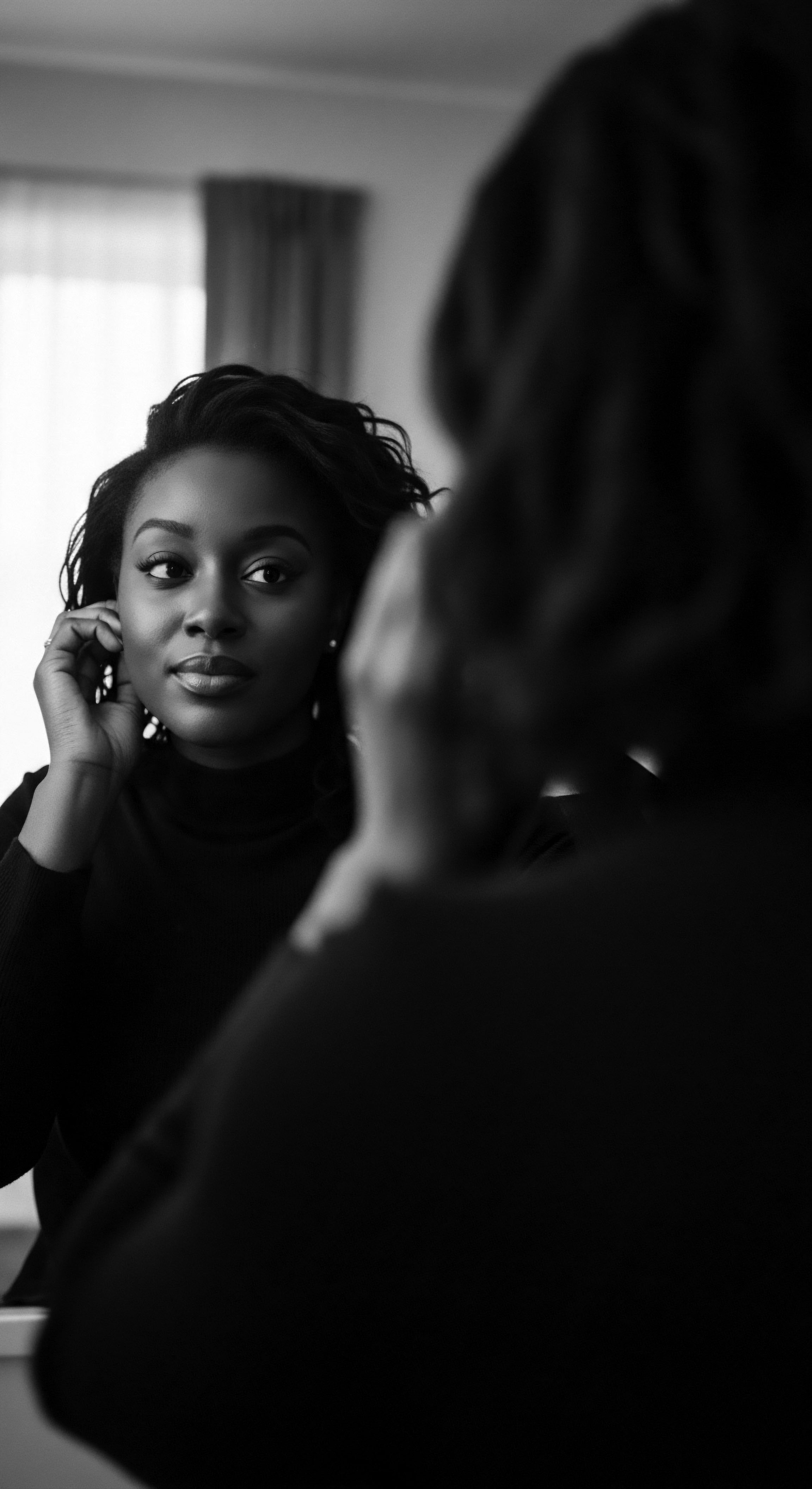
The Language of Hair and Identity
The biological diversity of textured hair also became a powerful canvas for cultural expression and identity. In pre-colonial African societies, hair was a visual language, capable of communicating intricate details about an individual’s life. Styles could convey age, marital status, social rank, tribal affiliation, and even spiritual beliefs. The very malleability of textured hair, its capacity to be braided, twisted, coiled, and sculpted into elaborate forms, allowed for this complex symbolic system to flourish.
An ethnographic study by Sybille Rosado (2003) on women of African descent in the diaspora highlights how hair and hairstyles serve as evidence of ongoing rituals and a shared cultural grammar, demonstrating connections between the diaspora and sub-Saharan Africa. This perspective elevates hair beyond a mere biological attribute, positioning it as a dynamic element within a living cultural heritage. When early European travelers encountered West African societies in the 16th century, they were struck by the elaborate intricacy and variety of hairstyles, a testament to the sophistication of this visual language. This societal importance reinforced the care and attention given to hair, ensuring its health and longevity for both biological and cultural reasons.
This understanding of hair’s biological advantages in ancient environments provides a deeper appreciation for why textured hair has remained a profound marker of heritage. Its physical attributes are not just aesthetic; they are living testaments to human adaptation, resilience, and the enduring power of cultural identity forged in specific historical and ecological contexts. The relay of this knowledge, from the scientific inquiry into its origins to the cultural practices that celebrate its forms, continues to strengthen the bond between textured hair and its rightful place in human history.

Reflection
As we stand at the close of this exploration, the resonance of textured hair’s heritage becomes a living presence. It is a profound realization that the coils and waves, the tight spirals and vibrant strands, are not merely aspects of personal adornment. They are, at their very core, biological echoes of journeys taken, adaptations secured, and wisdom passed down through ancestral lines.
The inherent biology of textured hair, so perfectly suited for the intense solar rhythms of ancient Africa, speaks to a deep, harmonious relationship between humanity and its original environment. This understanding allows us to truly grasp that our hair carries not only genetic information but also the story of our collective survival and ingenuity.
The practices of care, the rituals, the communal moments of grooming—each act, whether ancient or contemporary, is a tender thread binding us to those who came before. When we moisturize a coil, when we sculpt a protective style, we are engaging in a dialogue with millennia of ancestral wisdom. We are honoring the ingenuity that discovered the power of shea butter, the protective grace of a carefully constructed braid, or the simple yet profound comfort of a bonnet shielding strands through the night. These are not practices born of fleeting trends but of deep necessity, of a lived understanding of textured hair’s unique biological needs and its sacred place in human experience.
Textured hair stands as a testament to resilience, a symbol of unwavering identity. It has weathered attempts at erasure, defied imposed standards, and continues to assert its inherent beauty and strength. Each strand is a luminous archive, holding histories of adaptation, of resistance, and of triumphant cultural continuity.
By acknowledging its biological narrative, its deep environmental connection, and its rich ceremonial past, we are not simply studying hair. We are recognizing a vibrant, living library of heritage, a constant reminder of who we are, where we come from, and the unbound future we are still creating with every coil and curl.
References
- BLAM UK CIC. (2022). The History of Black Hair.
- Buala. (2024). Hair as Freedom.
- Lasisi, T. D. Havenith, G. & Jablonski, N. G. (2023). Human scalp hair as a thermoregulatory adaptation. Proceedings of the National Academy of Sciences, 120(24), e2301827120.
- Rosado, S. D. (2003). No Nubian Knots or Nappy Locks ❉ Discussing the Politics of Hair Among Women of African Decent in the Diaspora.
- Trost, L. B. (2025). Evolution of long scalp hair in humans. British Journal of Dermatology.
